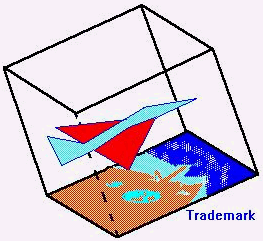|
Orkney Sights and Sounds, Part 2 To begin our exploration we exited the Stomness Hotel, I turned to the left attracted by a colourful bus which was preparing to leave or had just arrived. We were on Victoria Street at the head of the Scrabster ferry pier. There was a grey painted, cast iron structure opposite. It was formerly a fountain. Now the basin was filled with flowers. An inscription indicated that the fountain was dedicated to the memory of Alexander Graham, a Stromness civic-minded native who died on April 16, 1783. The Town House, possibly a court house, next to the hotel caught my eye as I saw its beautiful display of flowers that were unfamiliar to me. As I stood looking at them I soon became involved in conversation with local residents who told me that the flowers were called Godetia, an annual that elsewhere blooms in spring and early summer but in Orkney it was in full bloom in October. The spiked wrought iron fence had been painted a soft lavender color. At the stairway there was an ornate filigree-designed archway. I thought it was just decorative but Glenn believed that there had once been a gate here. As I turned back on our route to head south, I appreciated the fact that I thoughfully had brought some sensible shoes as the flagged pavement was quite irregular. As we proceeded down Victoria Street, we came to the Royal Hotel with offered a cocktail lounge. We decided to check on it later. We continued down the jagged streets while now and then pausing to press against a building as traffic went by. We were intrigued by a bookstore with three-sided front. A sign above the doorway said "J. L. Broom". If memory serves, John Rae was proprietor. As a former bookstore worker, I found the shop was carefully categorized in concise and accurate manner. The young woman who was managing the shop was helpful and shared some delightful anecdotes. We learned that author and poet George Mackay Brown often visited. She told us he had been born in Stromness and except for a few years of schooling in Edinburgh he lived in Stromness. Since then we learned he died in 1996. We loaded up with books and maps about the Islands especially on subjects about the geologic origin, stone, iron and bronze ages as well as the archeological locations. Orkney is one of the best places in the United Kingdom to study the past. As we continued down the twisting streets we came to a lane with an intriguing name. I couldn't resist having Glenn pose for a photograph of the Khyber Pass. Armed with information from conversations with Orcadians and material gained from our books and maps, we learned about one a word used often in different ways. The word was quoy. With the natural inclination of each early resident to have waterfont property, a narrow strip of land was designated as a quoy. Each quoy had a waterfront and a strip for farming. There was either a pier or boat slip at the shoreline. As the population grew, a second building would be built on each quoy, with a narrow space between it and the building at the waterfront. Obviously the essentially north/south tidal shoreline was irregular. As the need grew to establish a town site, spaces between first and second buildiings were joined. Since the space varied from quoy to quoy, the resulting streets are necessarily jagged. Notice to Canada Homecoming Participants Take a 35 mm camera. Your camera need not be digital. If you have one, take a portable tape recorder. If you like, when you have been back home for awhile, feel free to contact us for help in telling folks on the Internet about your trip. Our Orkney pages are based on trips in the period 1976-83. We will love comparing notes with you. |
